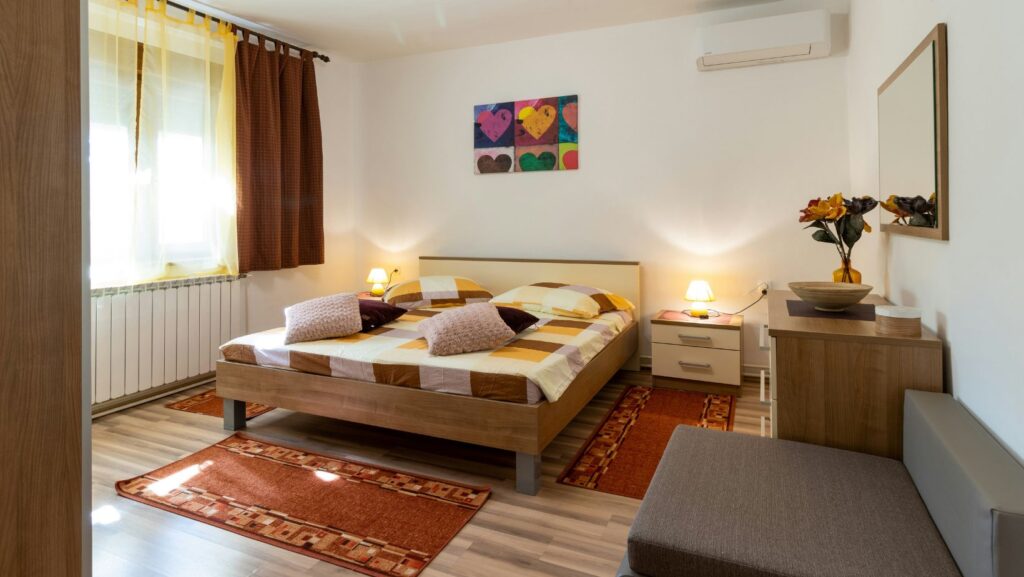
When selecting the perfect flooring for your home, there are many factors to consider. Each room in your home serves a unique purpose and experiences different levels of foot traffic, moisture, and overall wear and tear. The flooring you choose can significantly impact the aesthetics, functionality, and overall value of your property. The options are vast and varied, from plush carpets to sleek hardwood, durable laminate, and water-resistant vinyl. In this article, we will delve into the important considerations when selecting the right flooring for every room in your home, ensuring that you make the best choice to suit your lifestyle and design preferences. Whether you are looking for a cozy carpet for your living room, a durable tile for your kitchen, or a luxurious wood floor for your bedroom, we will provide you with expert advice and guidance to help you make an informed decision that will enhance the beauty and practicality of your living space.
Evaluating Room Usage for Flooring Choices
To effectively evaluate room usage for flooring choices, it is essential to consider the function and amount of traffic each room experiences. For high-traffic areas such as entryways, living rooms, and kitchens, choosing durable and easy-to-clean flooring options that can withstand heavy use is important. Hardwood, laminate, and vinyl flooring are popular choices for these areas due to their durability and ease of maintenance.
For rooms with less foot traffic, such as bedrooms and dining rooms, you may want to prioritize comfort and aesthetics. Plush carpets or cozy area rugs can create a comfortable and inviting atmosphere in these spaces. Additionally, for rooms prone to moisture, such as bathrooms and kitchens, water-resistant flooring options such as tile or vinyl are recommended to prevent damage and ensure longevity. By carefully evaluating the function and traffic of each room in your home, you can select the perfect flooring that meets your needs and enhances your living space’s overall look and feel.
Advantages of Using Eco-friendly Options Like Marmoleum
Choosing eco-friendly options like Marmoleum for your home can offer a variety of advantages that benefit both your living space and the environment. Marmoleum flooring is made from natural materials such as linseed oil, wood flour, pine rosin, and jute, making it a sustainable choice that reduces your carbon footprint.

By opting for eco-friendly flooring, you can contribute to a healthier indoor environment by reducing harmful chemicals and toxins often found in traditional flooring materials. This can help improve air quality and create a safer, more comfortable living space for you and your family.
Marmoleum and other sustainable flooring choices offer durability and longevity, saving you money in the long run. These materials are designed to withstand high foot traffic, moisture, and wear and tear, making them ideal for busy home areas such as kitchens, bathrooms, and entryways. Investing in eco-friendly flooring allows you to enjoy a beautiful and functional space that will retain its value and appeal for years. Ultimately, choosing sustainable materials like Marmoleum can enhance your home’s aesthetic appeal and contribute to a healthier and more eco-conscious lifestyle.
Comparing Hardwood Tile and Carpet
There are several key factors to consider when comparing hardwood tile and carpet as flooring options for residential areas. Hardwood tile offers a timeless and elegant look that adds a touch of sophistication to any room. It is durable and easy to clean, making it a popular choice for high-traffic areas such as living rooms and hallways. On the other hand, carpet provides a soft and comfortable surface ideal for bedrooms and cozy family rooms. It offers insulation against cold floors and noise reduction, making it a great choice for areas where comfort is a priority.
One important consideration when choosing between hardwood tile and carpet is maintenance. Hardwood tile requires regular sweeping and occasional mopping to keep it looking its best, while carpet requires vacuuming and periodic steam cleaning to prevent stains and odors. Additionally, hardwood tile is more resistant to moisture and stains, making it a better option for households with children or pets. However, carpet provides a warmer and more inviting feel underfoot, which can be desirable in certain areas of the home.

Ultimately, the decision between hardwood tile and carpet will depend on your preferences and the specific needs of each room in your home.
Longevity and Maintenance Requirements
Longevity and maintenance requirements are crucial when choosing the right flooring for each room in your home. Different flooring types have varying lifespans and care needs, so it is important to understand these factors to make an informed decision. For example, hardwood floors are known for their durability and can last for decades with proper maintenance. At the same time, carpets may need to be replaced more frequently, especially in high-traffic areas.
It is important to consider the maintenance requirements of each flooring type. Some flooring options, such as vinyl or laminate, are easy to clean and require minimal upkeep, making them ideal for busy households. On the other hand, natural stone or tile floors may require more regular cleaning and sealing to maintain their appearance and prevent damage. By understanding the maintenance needs of different flooring types, you can choose a flooring option that fits your lifestyle and will stand the test of time in your home.
When selecting the right flooring for each room in your home, it is essential to consider the aesthetics and functionality and the longevity and maintenance requirements of each flooring type. By understanding the lifespan and care needs of different flooring options, you can make a decision that will enhance the beauty and value of your home for years to come. Whether you opt for hardwood, carpet, tile, or laminate, taking the time to research and choose the right flooring will pay off in the long run.












